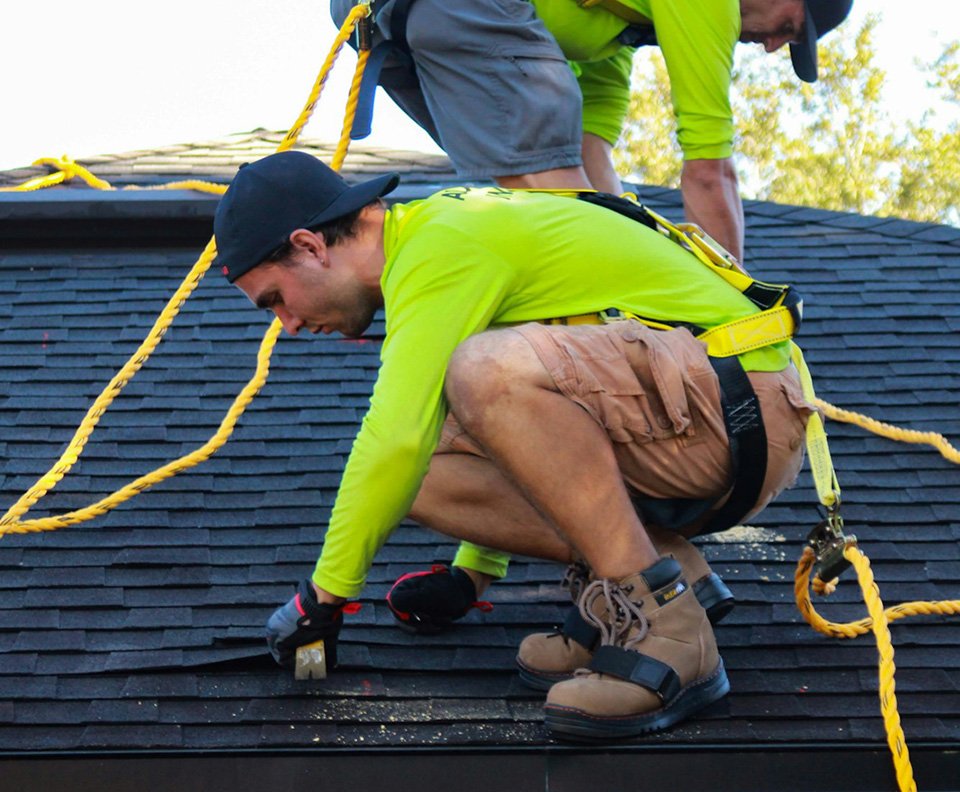The first chimney we know about dates back to the 12th century. Before that, people placed fire pits in the middle of their dwellings.
Back then, homeowners didn’t really understand how their chimneys worked or why taking care of them was so important. So, even though there was a hole in the roof, the homes were constantly filled with smoke and there was always the danger of the house going up in flames.
Luckily, those days are long gone. But it’s still a good idea to learn how a chimney works so you can better understand what kind of maintenance yours needs.

The Science Behind Chimneys
A chimney works due to principles of airflow. Hot air rises because it is not as dense as cold air. Instead of venting hot air up and out of your home, chimneys remove hot gasses from your house’s heating system. This rising hot gas leads to a difference in pressure. This is called a draft. The draft pulls in combustion air into your furnace and pushes out exhaust gas.
A chimney has both internal and external parts and so, is subject to weather, which can cause damages.
Common Chimney Problems
Understanding how does a chimney work isn’t as easy as it seems. And it’s a complex system that is often overlooked by homeowners. But failure to maintain a chimney can be dangerous.
Here are some of the most common chimney problems of which homeowners should.
Blockages
Debris such as bird nests can block your chimney flue. Even small blockages can prevent your chimney from working effectively. These blockages should be removed to restore your chimney to full functionality.
Creosote Buildup
If you have a wood-burning fireplace, the gasses from the fire cause a buildup that is called creosote. This buildup is combustible and corrosive. A large buildup could even start a fire in your chimney.
One of the easiest ways to remove this buildup is with special logs that you burn in your fireplace. However, this is not a substitute for a yearly professional inspection and cleaning. You should let the experts take care of your chimney inspection and repair.
Cracks and Holes in the Flue
Wood fires can over time cause tiny holes and fissures in your flue. As a result, dangerous gasses could enter your home.
You should have a chimney expert look at your flue each year. They can make repairs as needed to prevent further problems. If untreated, expensive structural repairs will be inevitable.
Damage to Chimney Crown and Cap
Both the crown and cap of a chimney are out in the elements. Their role is to keep debris and rain out of your flue.
If these items become damaged, they may not be able to do their job, which can result in further repairs. In the winter, water in the chimney could cause a leak in the attic as the mortar joints freeze and crack apart.
All chimneys need to be sealed every 8-10 years to prevent water from getting in.
How Does a Chimney Work? Ask No More!
We hope you now can confidently answer the question, “How does a chimney work?” But remember: Just because you understand how it works doesn’t mean you can service it yourself. Always consult certified technicians to treat any problems with your chimney.
If you make a habit of inspecting your chimney and having a professional perform regular maintenance, you will get many years of use out of it.
If your chimney needs servicing, contact us. At Over the Top Roofing and Construction, we offer chimney repair and maintenance, as well as professional roofing in Milwaukee and the surrounding communities.


